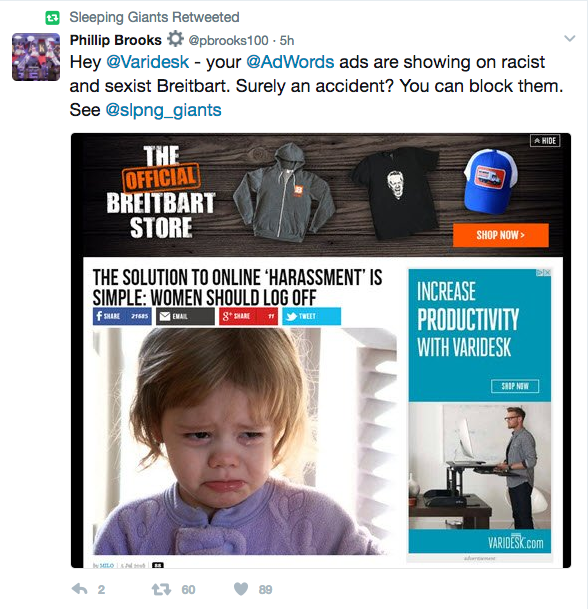Part 1 of 3: An advertiser’s guide to the strengths and limitations of programmatic ad platforms
Ad Tech’s Buzzword of the Year
The term “programmatic” is approaching “big data” in the marketing buzzword vernacular of overused marketing buzzwords. It has a tendency to surface in a variety of contexts and is often misunderstood. Our agency fields all sorts of questions related to programmatic advertising, such as:” What exactly is a programmatic ad?” “How does programmatic differ from traditional PPC?” Or my personal favorite, “I have no idea what programmatic advertising is, but my boss told me we need to be doing it.”
In many ways, ad tech remains the Wild West of online marketing. There are vast fortunes to be made while laws and policies are miles behind innovation. In this dusty landscape, programmatic ad platforms are the frontier pharmacies. Some sell a quality product, others peddle snake oil and neither are willing divulge exactly what goes into their solution.
Many marketers are jumping on the programmatic bandwagon without a clear understanding of exactly what they are paying for or how to compare the results to other channels. The goal of this post is to shed some light inside the black box that is programmatic advertising and share insights our agency has learned along the way.
In the spirit of full-disclosure, it’s worth noting that the agency I represent, Foghorn Labs, is ad platform agnostic and has not had any partnership agreements or investments in programmatic ad platforms leading up to this article.
First, a Few Definitions.
According to Marketing Land, “programmatic advertising helps automate the decision-making process of media buying by targeting specific audiences and demographics. Programmatic ads are placed using artificial intelligence (AI) and real-time bidding (RTB) for online display, social media advertising, mobile and video campaigns, and is expanding to traditional TV advertising marketplaces.”
A Digital Gold Rush
 According to an April 2016 study from eMarketer, more than two-thirds of U.S. digital display advertising is classified as “programmatic”. In 2017, estimated digital ad spend on programmatic platforms is predicted to exceed $27 billion, accounting for nearly three-fourths of all digital ad spend.
According to an April 2016 study from eMarketer, more than two-thirds of U.S. digital display advertising is classified as “programmatic”. In 2017, estimated digital ad spend on programmatic platforms is predicted to exceed $27 billion, accounting for nearly three-fourths of all digital ad spend.
Whether weighed in gold, or calculated in BitCoin, those are hard numbers to ignore. So why is programmatic advertising so popular and what’s keeping it from becoming 100% of digital display ad spend?
The Strengths and Limitations of Programmatic Ad Platforms
Programmatic platforms are a great way to run large-scale branding campaigns with minimal human oversight. They automate mundane campaign management and optimization tasks at a speed and frequency that humans can’t possibly match. In many respects, programmatic ad platforms embody many of the most exciting technologies in modern advertising. So what’s not to like?
Like any artificial intelligence system, the output reflects the input. Programmatic is not unlike a self-driving car in that the “driver” only arrives at their intended destination if they enter it correctly into the navigation system. If the wrong campaign budgets, targeting or settings are entered into a programmatic ad campaign, budget will be wasted, goals won’t be reached and the brand’s reputation may be put at risk.

Most programmatic ad platforms are at their best with mass-market branding campaigns. Think Coca-Cola, P&G, Nike or Ford. These brands can afford to reach out to nearly the entire universe of internet users, knowing that at least one of their products will eventually resonate. With such large data sets, programmatic ad platforms can quickly separate the user archetypes that are most likely to convert from those that are uninterested.
Highly-focused campaigns as well as brands with specific target audiences don’t have the luxury of such large data sets, or branding budgets. When the pool of target users is smaller, it’s more like finding a few needles in a haystack than shouting into a megaphone from a crowded street corner. The majority of the clients we work with fall into this specialized category which involves advertising campaigns designed to feel more like a flyer in your favorite local store than than a giant billboard next to a freeway offramp.
Guiding the Algorithm

One of the challenges we’ve encountered when using programmatic ad platforms to run components of highly-targeted integrated marketing campaigns is the lack of available inputs during campaign setup. Most programmatic ad platforms want you to trust their “secret sauce” rather than guide the algorithm with lessons learned.
We tested out RocketFuel, a “predictive marketing platform” with a long-time client that had an insatiable appetite for remarketing traffic. We were surprised when they were not interested in our guidance or recommendations during campaign setup. Instead, we were encouraged to “let the algorithm do the work.” This particular campaign ended up breaking even, with most traffic coming from mass-market websites that our target audience was unlikely to ever visit.
Like most “black box” programmatic platforms, the algorithm’s one-size-fits-all approach was tuned to focus on quantity over quality, which would have been just fine for a branding campaign, but insufficient for something more narrowly-focused. Ironically, their post-mortem campaign summary included many of the same findings and suggestions they ignored before launch.
This particular campaign ended up breaking even, which was nowhere near the expectations set by RocketFuel. Most of the traffic came from mass-market websites that our target audience was unlikely to ever visit. The algorithm’s one-size-fits-all approach was far more focused on quantity over quality, which would have been just fine for a branding campaign, but insufficient for something more narrowly-focused. Ironically, their post-mortem campaign summary included many of the same findings and suggestions they ignored before launch.
Preventing Off-Brand Ad Placements
Most programmatic ad platforms will serve your ads broadly during a “learning period” before narrowing them down to the top performing sites. Unless you proactively blacklist off-brand sites, it’s likely your ads are going to show up on pages that you’d never intentionally select. The recent alt-right website controversy sparked by Sleeping Giants put a microscope on this very issue.

Sleeping Giants encouraged like-minded Twitter users to tweet screenshots of a brand’s remarketing ads on alt-right sites like Brietbart, tagging the brand for followers to see. It made it look like these brands were deliberately buying ads on inflammatory websites, when in reality they were just using basic remarketing ad targeting through various programmatic ad platforms.
Remarketing ads will target a previous site visitor for as long as the cookie lasts, so these brands were not directly targeting these alt-right sites, but rather targeting the user regardless of where they were online.
Your ads can and will show up on off-brand sites unless you proactively blacklist them.
Most ad platforms have automated filters in place, but they tend to be quite slow to react to news or controversy. It’s important for campaign managers to stay on top of current news events, especially controversies and tragedies, to limit negative brand exposure.
These sorts of off-brand ad placements are not limited to websites. Even YouTube, which has some of the most sophisticated, proactive content filters in place needs human oversight. Recently, Google lost out on millions in advertising dollars from major brand advertisers including AT&T, Verizon, Pepsi, Walmart, Johnson & Johnson and Enterprise Rent-A-Car after those brands discovered their ad content showing up next to videos promoting extremist views and hate speech.
When selecting a programmatic ad platform to run new customer prospecting campaigns, look for a solution that allows for user guidance as well as strict content filters. Leading programmatic ad platforms are increasingly allowing for varying levels of this sort of customization, but it’s typically up to the advertiser or agency to drive that conversation. Blindly trusting the algorithm is like taking a gulp of snake oil before knowing the ingredients.
The second part of this three part series on programmatic ad platforms will cover more advanced campaign optimization strategies including click fraud filters, attribution modeling and crediting view-through vs direct conversions.
More Articles in This Series:
Part 2: Programmatic Ad Campaign Fraud Prevention and Attribution Models
Part 3: A Vision For The Evolution of Programmatic Advertising

